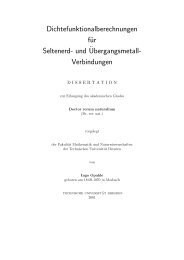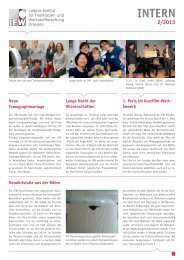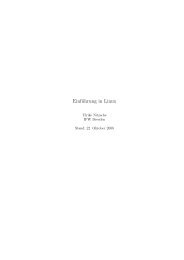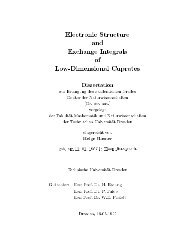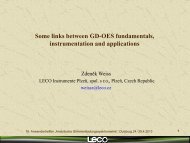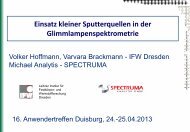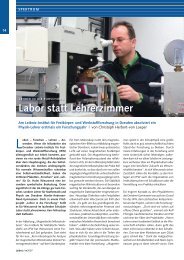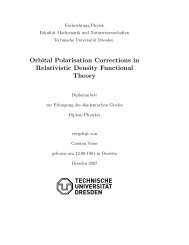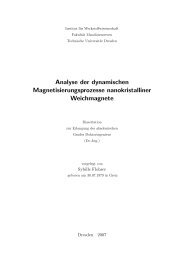ALBERTO BOLLERO REAL
ALBERTO BOLLERO REAL
ALBERTO BOLLERO REAL
You also want an ePaper? Increase the reach of your titles
YUMPU automatically turns print PDFs into web optimized ePapers that Google loves.
3.3 Magnetisation reversal processes in nanocomposite magnets<br />
magnetic grains, the application and removal of a certain applied reversed field smaller<br />
than the critical field described above will bring the system back to the state where all the<br />
magnetic moments are aligned due to the exchange-coupling effect between the soft and<br />
the hard grains. This reversible rotation of the exchange coupled soft phase for fields not<br />
large enough to reverse the magnetisation of the hard magnetic phase was discovered by<br />
Schneider et al [45] and termed “exchange-spring” mechanism by Kneller and Hawig [31].<br />
General criteria for the presence of the “exchange-spring” mechanism are:<br />
(a) although there are two different magnetic phases, the major demagnetisation curve<br />
shows a magnetically single-phase behaviour;<br />
(b) the ratio of remanence to saturation polarisation is higher than 0.5;<br />
(c) the recoil curves show a relatively high degree of reversibility in fields below coercivity<br />
(“high recoil permeability”).<br />
3.3.2 Intergrain interactions: δJ-plot<br />
The interactions between the grains can also be studied by plotting the quantity δJ<br />
defined as: δJ = (J d r (H m ) – (J r – 2J r (H m ))) / J r (also known as δJ- or δM-plot which is a<br />
graphical presentation of Wohlfarth’s relation (3.1) in dependence on the applied magnetic<br />
field). This relationship gives the deviations from the theoretical value for J d (H m ) given by<br />
Wohlfarth’s relation [46]. Two kinds of interactions can be responsible for the deviation<br />
from this latter relationship: magnetostatic and exchange interactions. However, different<br />
interpretations can be found in the literature concerning the sign of δJ [24,45,48-54]. In<br />
this study the working hypothesis of Ding et al [52], that positive values of δJ are<br />
indicative of predominant magnetostatic interactions whereas negative ones indicate the<br />
main role played by the exchange interactions in two-phase nanocomposite magnets, could<br />
be supported by analysing numerous experimental data.<br />
3.3.3 Nucleation field<br />
In permanent magnets based on rare-earth transition-metal compounds, the value of<br />
the coercive field deviates considerably from the predictions of the conventional Stoner/<br />
Wohlfarth theory. This discrepancy is normally ascribed as Brown’s paradox and attributed<br />
to microstructural effects. For an ideal microstructure, where nucleation of reverse<br />
23



